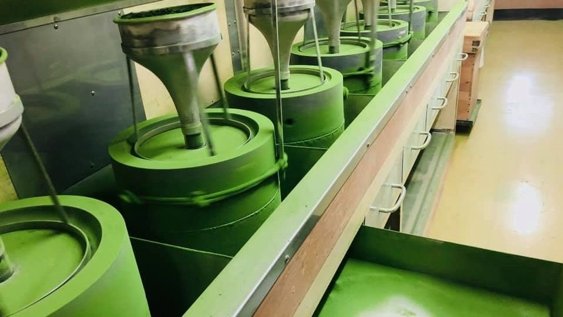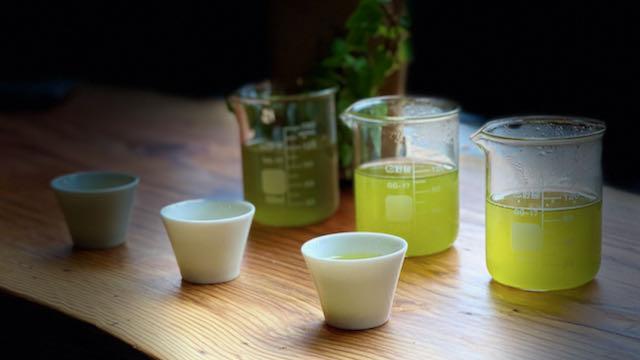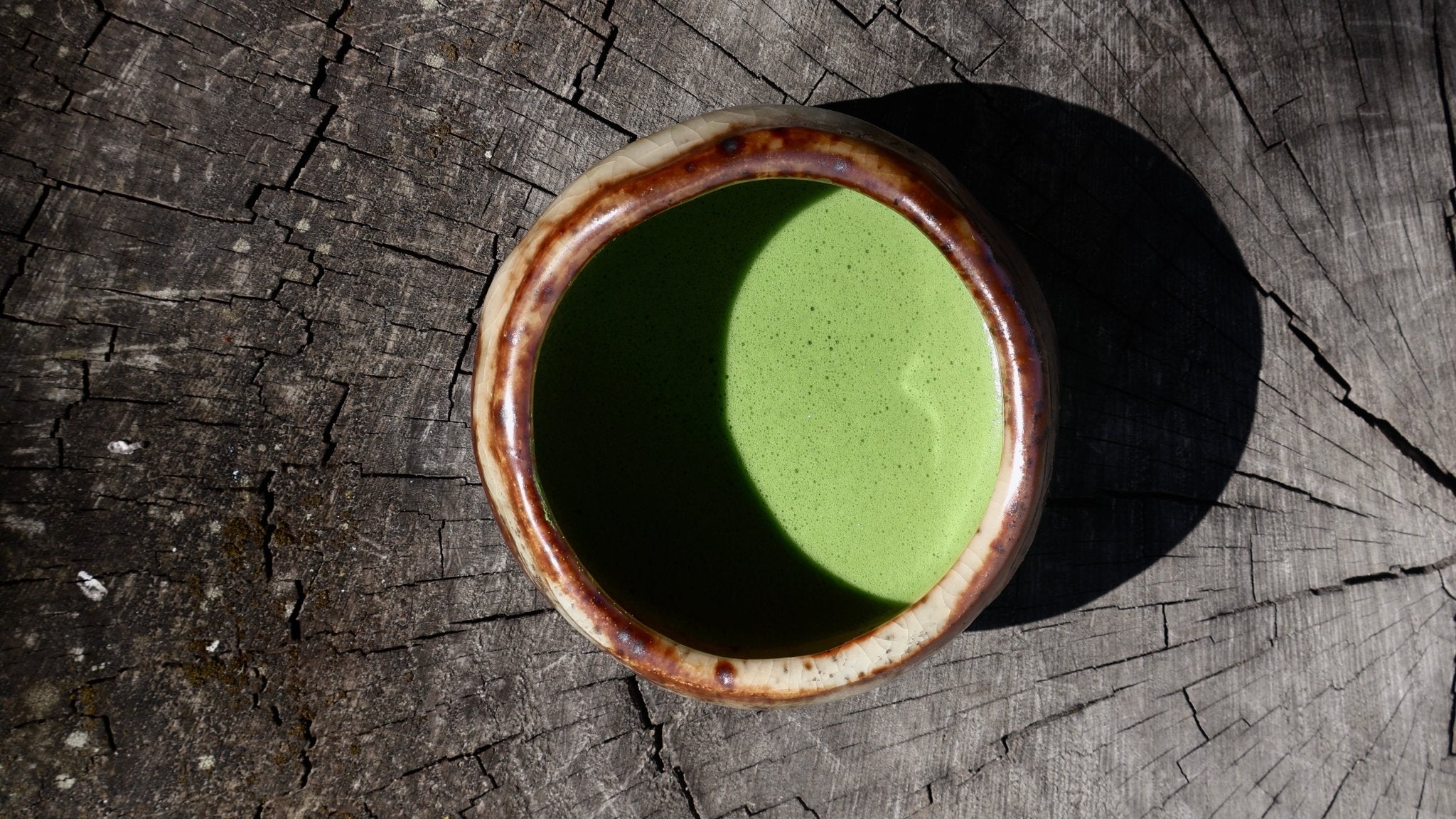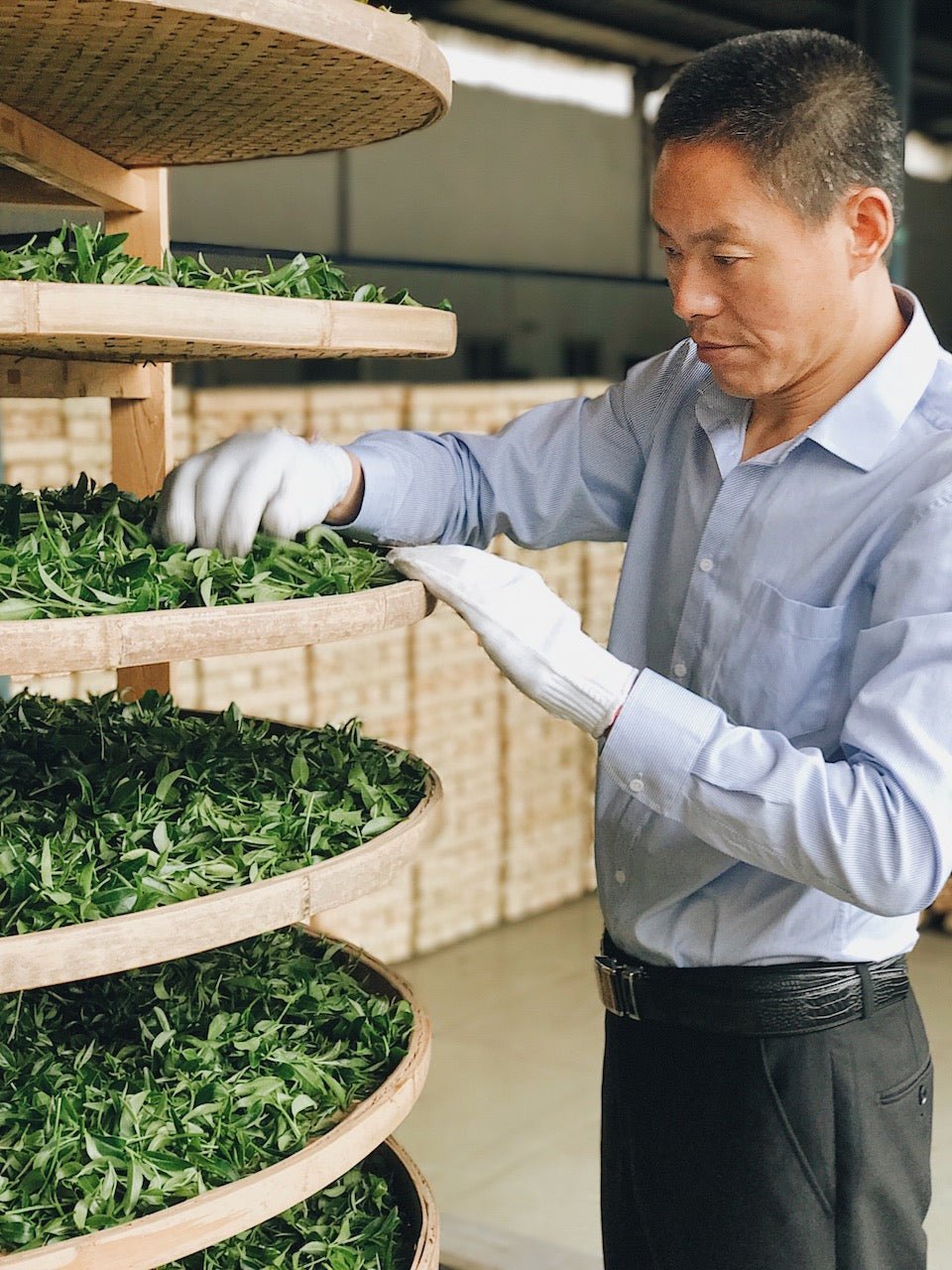TEA SCHOOL | Musings on Matcha, Spring 2021

MIND-BOGGLING FACT: You need 100kg of fresh tea leaves to get 10kg of competition-grade matcha. We consider it an honour and privilege to be able to drink and share this tea with you!
Thank you to Tsuji San for most of the images featured in this blog post. Not only does he create stunning tea; he is also very generous with his knowledge.
AN ODD TIME OF YEAR
It is fairly early in the year to be releasing matcha. [This post was written in May 2021]. Typically tea leaves for high-quality matcha are harvested in May and processed as soon as possible into tencha (碾茶) (more on that below); since the tea is still considered 'too strong' in energy, it is traditionally stored for a few months and then micro-milled into matcha (抹茶) sometime in fall.
TENCHA (碾茶)
The character 碾 means ‘grind’; tencha is better described as tea flakes destined to be milled into matcha. This is an over-simplification of the process:
- Fresh leaves are hand-picked, steamed and baked to produce what we call aracha, or rough tea.
- This aracha is refined by removing the stems and veins of the tea leaves, leaving only beautiful crispy tea flakes of fairly homogenous size.
- This refined tea is stored in a cooler for a few months and is later inspected and tasted by the Shokunin (master artisan), until it is considered ready for milling.


SHIZEN SHITATE (自然仕立て)
This describes ‘free growing’ tea fields, strictly destined for hand-picking, where the tea bushes are allowed to grow in any shape or form that they desire.
HONZU (本簀)
This is the most traditional way to shade the tea trees destined strictly for competition-grade matcha and gyokuro; the canopy is built with reeds and rice straw, and it is both costly and labour intensive. This is an image from Tsuji San’s fields in Uji Shirakawa.

KANREISHA (寒冷紗).
This is a more modern system to shade tea trees (using black nets made of synthetic fiber); it can also yield some pretty good results.




Comments